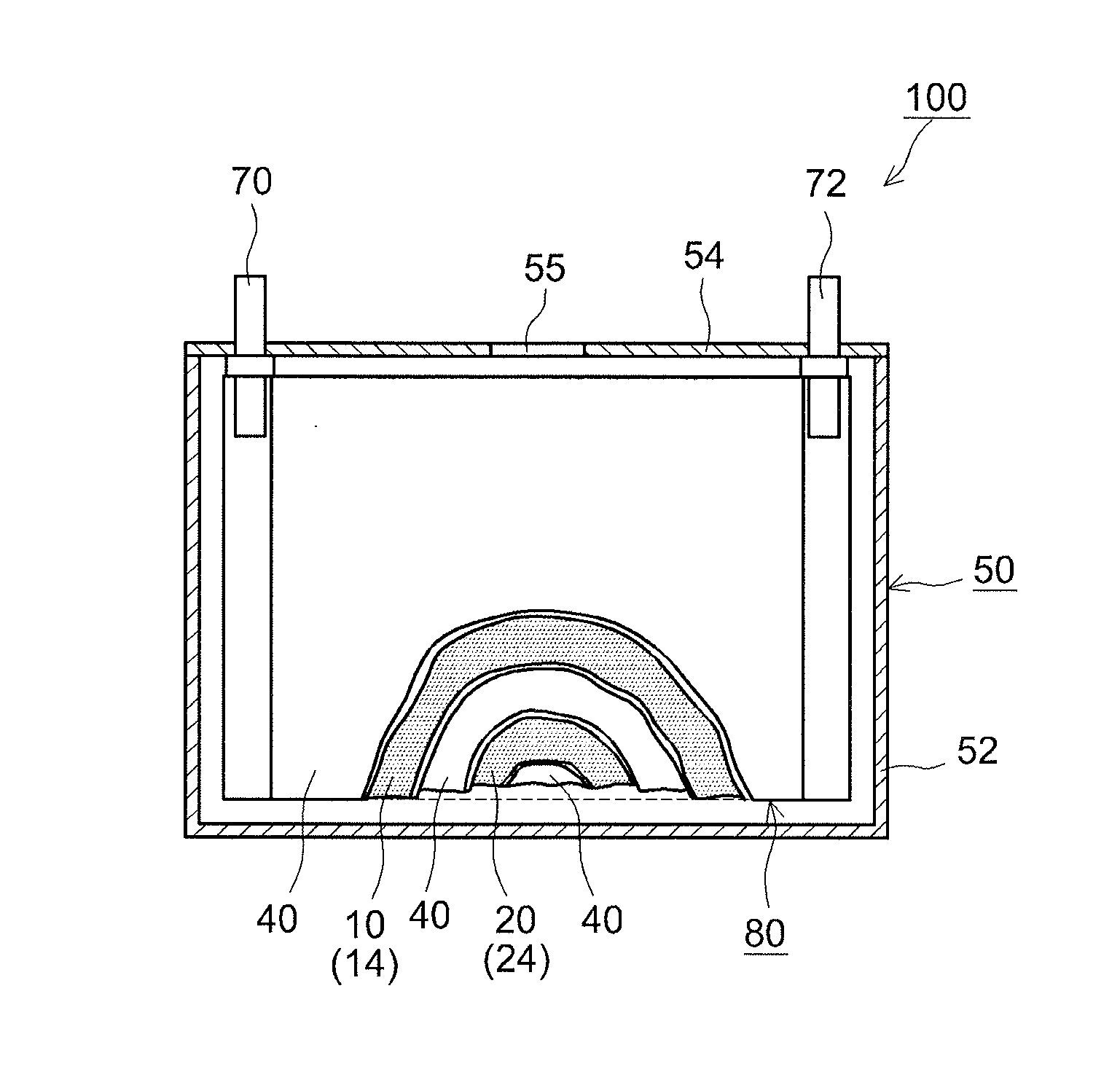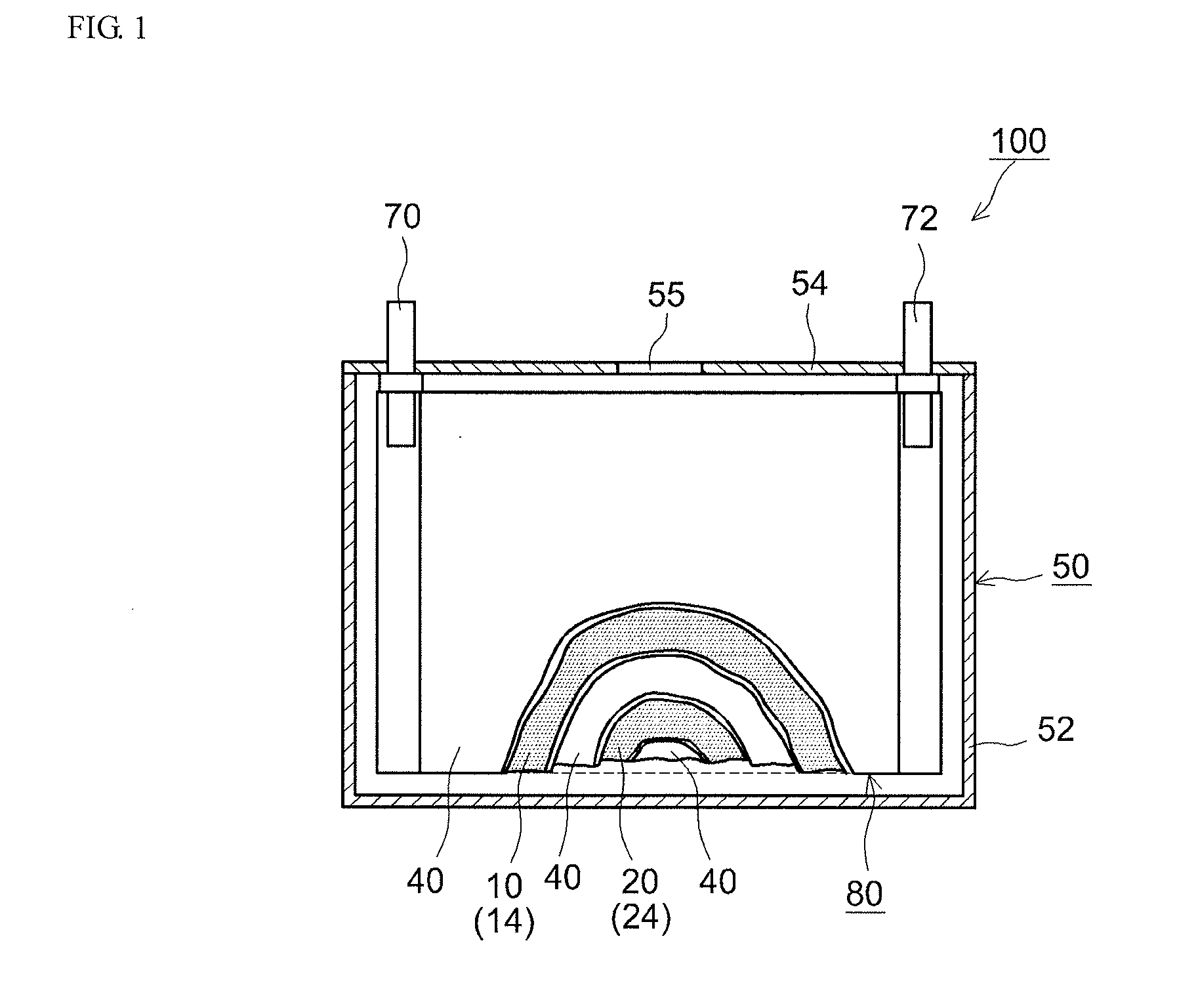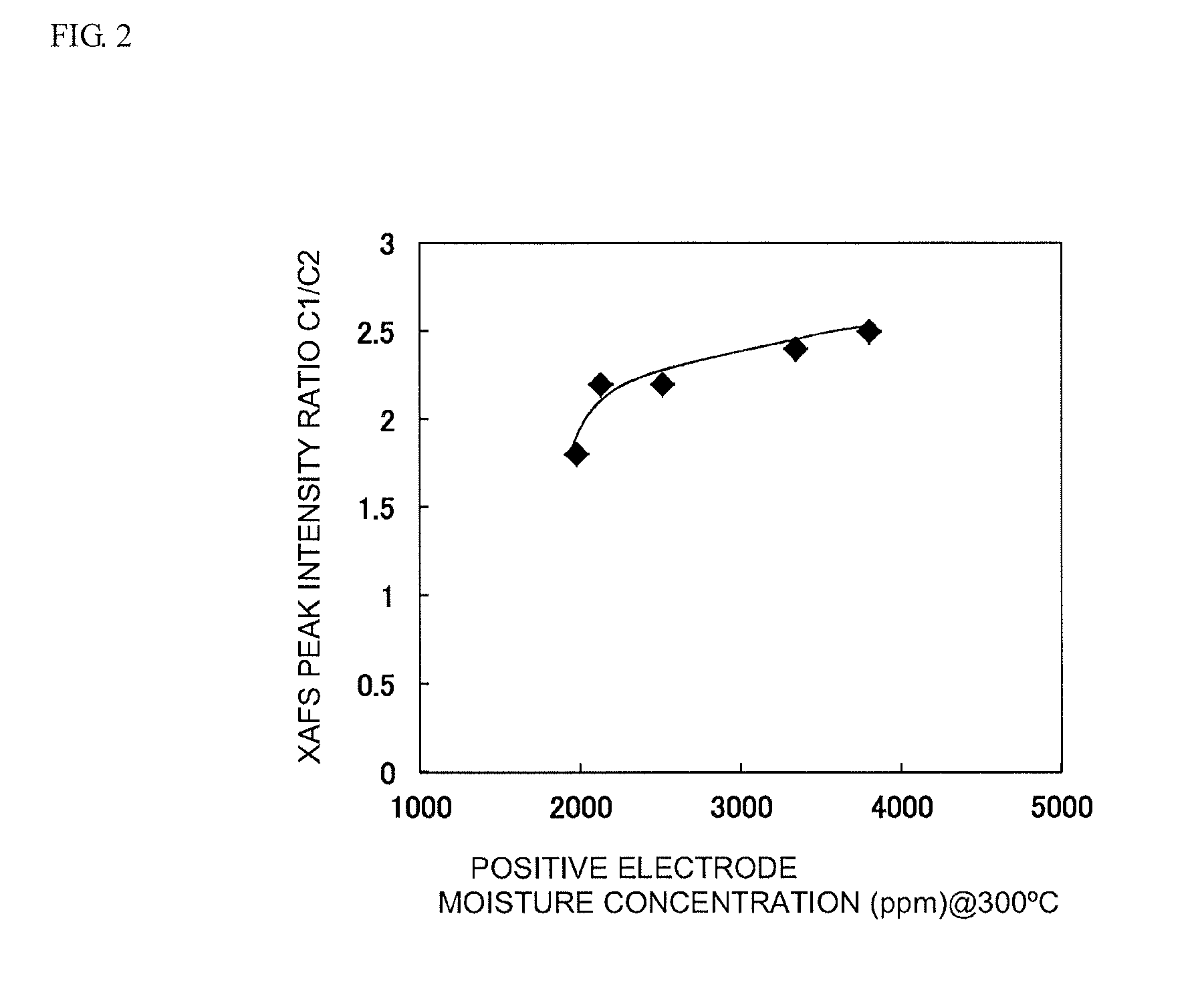Nonaqueous electrolyte secondary battery and production method thereof
a technology of nonaqueous electrolyte and secondary batteries, which is applied in the manufacture of final products, cell components, electrochemical generators, etc., can solve the problems of inability to meet the demand the moisture concentration of the positive electrode cannot be defined, and the acceptance of lithium ions by the negative electrode may be insufficient, etc., to achieve the effect of reducing the resistance of the negative electrode, and suppressing discharge discharge discharge discharge discharge discharge discharge discharge discharge discharge discharge discharge discharge discharge discharge discharge discharge discharge discharge discharge discharge discharge discharge discharge discharge discharge discharge discharge discharge discharge discharge discharge discharge discharge discharge discharge discharge discharge discharge discharge discharge discharge discharge discharge discharge discharge discharge discharge discharge discharge discharge discharge discharge discharge discharge discharge discharge discharge discharge discharge discharge discharge discharge discharge discharge discharge discharge discharge discharge discharge discharge discharge discharge discharge discharge discharge discharge discharge discharge discharge discharge discharge discharge discharge discharge discharge discharge discharge discharge discharge discharge discharge discharge discharge discharge discharge discharge discharge discharge discharge discharge discharge discharge discharge discharge discharge discharge discharge discharge discharge discharge discharge discharge discharge discharge discharge discharge discharge discharge discharge discharge discharge discharge discharge discharge discharge discharge discharge discharge discharge discharge discharge discharge discharge discharge discharge discharge discharge discharge discharge discharge discharge discharge discharge discharge discharge discharge discharge discharge discharge discharge discharge discharge discharge discharge discharge discharge discharge discharge discharge discharge discharge discharge discharge discharge discharge discharge discharge discharge discharge discharge discharge discharge discharge discharge discharge discharge discharge discharge discharge discharge discharge discharge discharge discharge discharge discharge discharge discharge discharge discharge discharge discharge discharge discharge discharge discharge discharge discharge discharge discharge discharge discharge discharge discharge discharge discharge discharge discharge discharge discharge discharge discharge discharge discharge discharge discharge discharge discharge discharge discharge discharge discharge discharge discharge discharge discharge discharge discharge discharge discharge discharge discharge discharge discharge discharge discharge discharge discharge discharge discharge discharge discharge discharge discharge discharge discharge discharge discharge discharge discharge discharge discharge discharge discharge discharge discharge discharge discharge discharge discharge discharge discharge discharge discharge discharge discharge discharge discharge discharge discharge discharge discharge discharge discharge discharge discharge discharge discharge discharge discharge discharge discharge discharge discharge discharge discharge discharge discharge discharge discharge discharge discharge discharge discharge discharge discharge discharge discharge discharge discharge discharge discharge discharge discharge discharge discharge discharge discharge discharge discharge discharge discharge discharge discharge discharge discharge discharge discharge discharge discharge discharge discharge discharge discharge discharge discharge discharge discharge discharge discharge discharge discharge discharge discharge discharge discharge discharge discharge discharge discharge discharge discharge discharge discharge discharge discharge discharge discharge discharge discharge discharge discharge discharge discharge discharge discharge discharge discharge discharge discharge discharge discharge discharge discharge discharge discharge discharge discharge discharge discharge discharge discharge discharge discharge discharge discharge discharge discharge discharge discharge discharge discharge discharge discharge discharge discharge discharge discharge discharge discharge discharge discharge discharge discharge discharge discharge discharg
- Summary
- Abstract
- Description
- Claims
- Application Information
AI Technical Summary
Benefits of technology
Problems solved by technology
Method used
Image
Examples
Embodiment Construction
[0032]The following provides an explanation of preferred embodiments of the present invention. Furthermore, matters other than those specifically mentioned in the present description that are required to carry out the present invention (such as battery constituents or ordinary production processes not characterizing the present invention) can be understood by a person with ordinary skill in the art to be design matters based on the related art in the relevant field. The present invention can be carried out based on the contents disclosed in the present description and common general technical knowledge in the relevant field.
[0033]>
[0034]The nonaqueous electrolyte secondary battery disclosed herein (and typically, a lithium ion secondary battery) is provided with a positive electrode provided with a positive electrode active material layer, a negative electrode provided with a negative electrode active material layer, and a nonaqueous electrolyte. The positive electrode and the negat...
PUM
 Login to View More
Login to View More Abstract
Description
Claims
Application Information
 Login to View More
Login to View More - R&D
- Intellectual Property
- Life Sciences
- Materials
- Tech Scout
- Unparalleled Data Quality
- Higher Quality Content
- 60% Fewer Hallucinations
Browse by: Latest US Patents, China's latest patents, Technical Efficacy Thesaurus, Application Domain, Technology Topic, Popular Technical Reports.
© 2025 PatSnap. All rights reserved.Legal|Privacy policy|Modern Slavery Act Transparency Statement|Sitemap|About US| Contact US: help@patsnap.com



